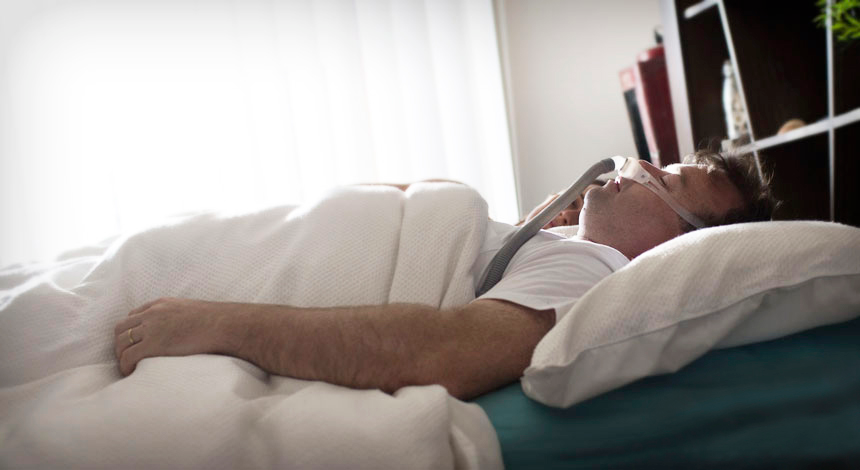Studies have shown that OHS can be treated effectively by following a controlled weight loss program1 and starting positive airway pressure or noninvasive ventilation (NIV).1 Losing weight will not only improve your general health, but it can also improve your breathing and gas exchange (ie, keeping your oxygen and carbon dioxide levels balanced).
In addition to starting you on a weight loss program, your care provider may also prescribe the following:
- An arterial blood gases test*
- A lung function test
- A polysomnography test (overnight sleep study)
- Chest x-rays
*This test measures the acidity, oxygen and carbon dioxide content of the blood in your arteries to see how well your lungs move oxygen into the blood, and carbon dioxide out of the blood.
Noninvasive ventilation (NIV)
For OHS, the aim of ventilation is to improve the exchange of oxygen and carbon dioxide between the blood and the air in your lungs2 and support your respiratory system so you don’t need to work so hard to breathe effectively.3 This can be done either invasively or noninvasively.
Invasive ventilation is where air is delivered to you via something that enters your body. For example:
- Intubation, where a tube is inserted down your throat to provide air.
- A tracheotomy, where an incision or opening is made into your throat to deliver air into your system.
By comparison, noninvasive ventilation doesn't require surgery. Instead, pressurized air is delivered from a small device that sits on your bedside table, to a mask that you wear over your mouth and/or nose. NIV is a common treatment option for OHS.1 ResMed’s ventilation options to treat OHS are as follows: Lumis™ series, Stellar™ series and S9™ series.










